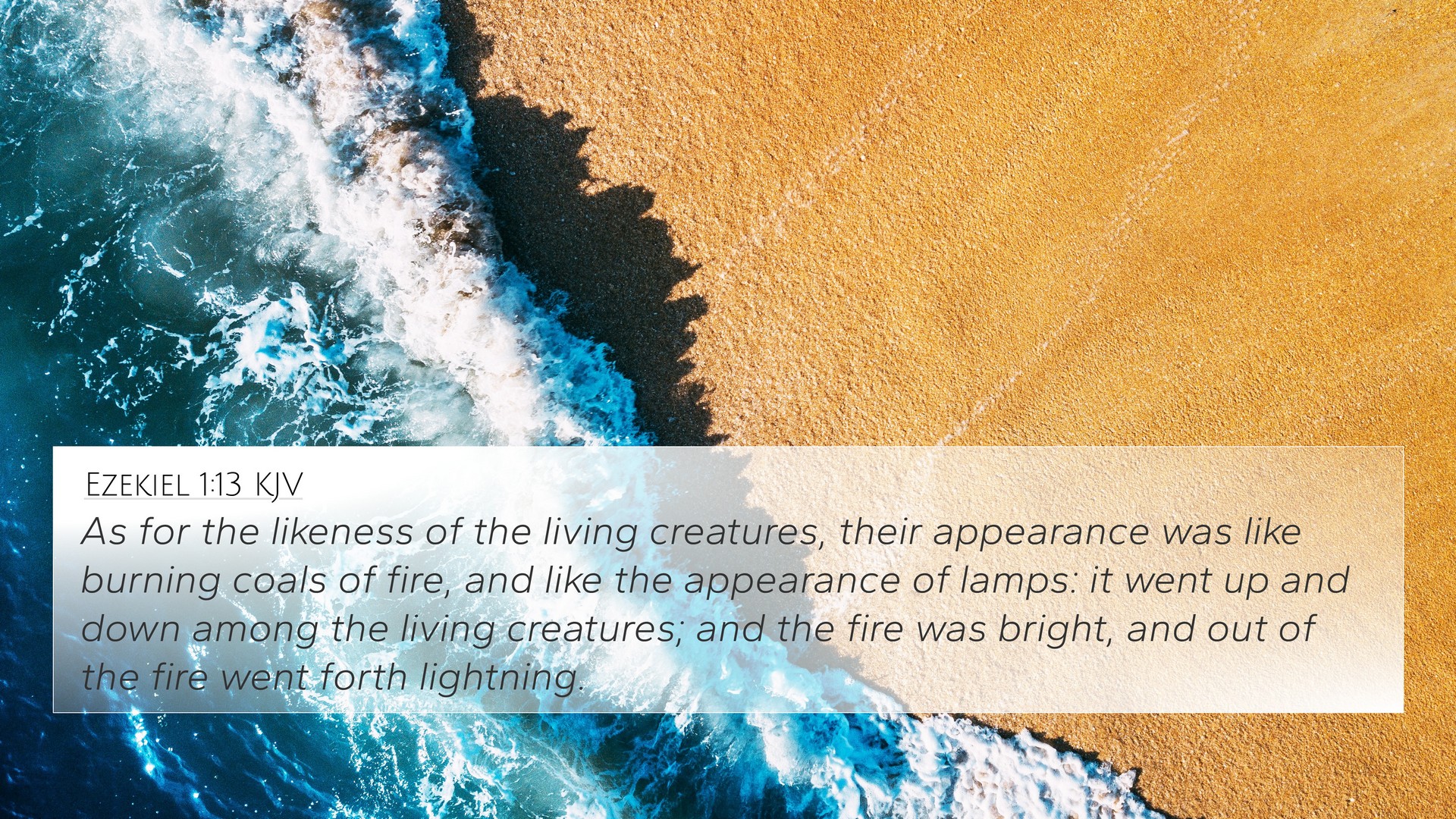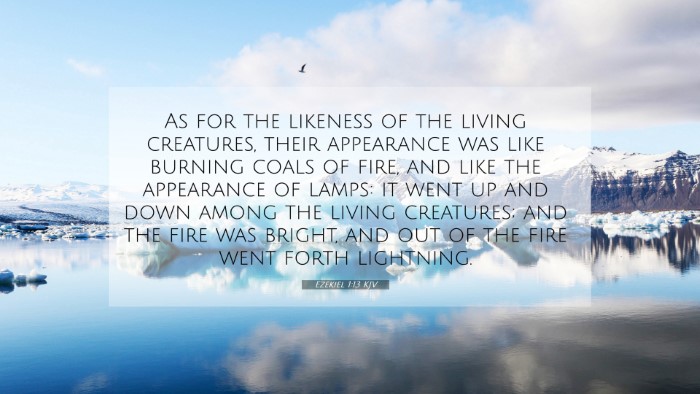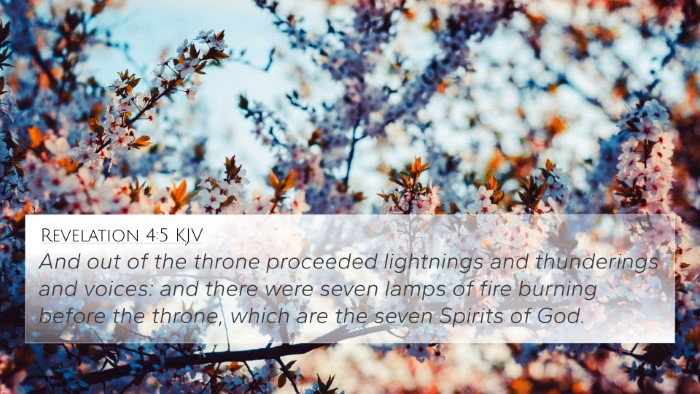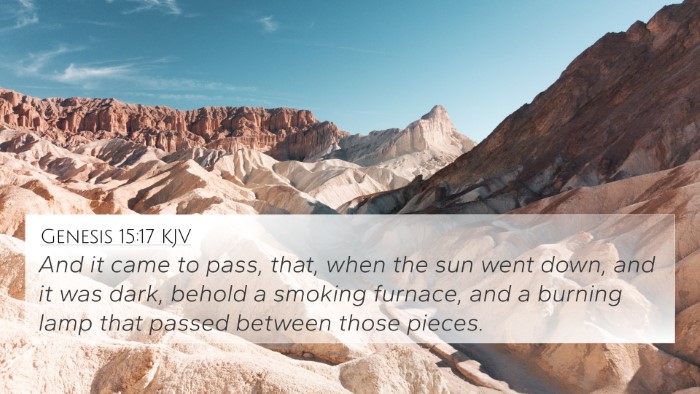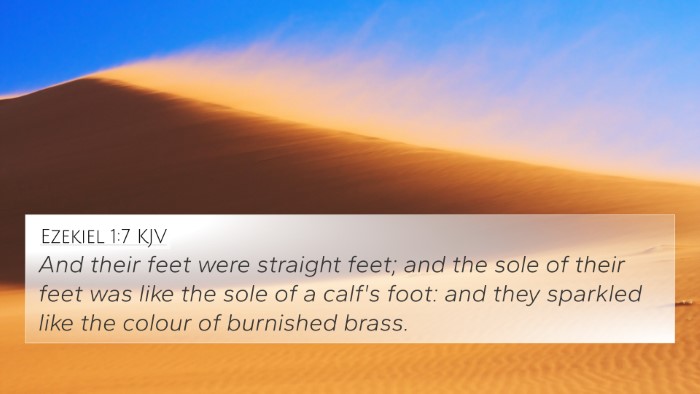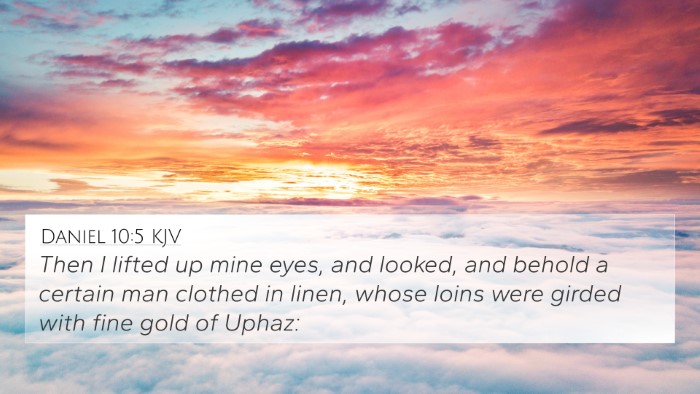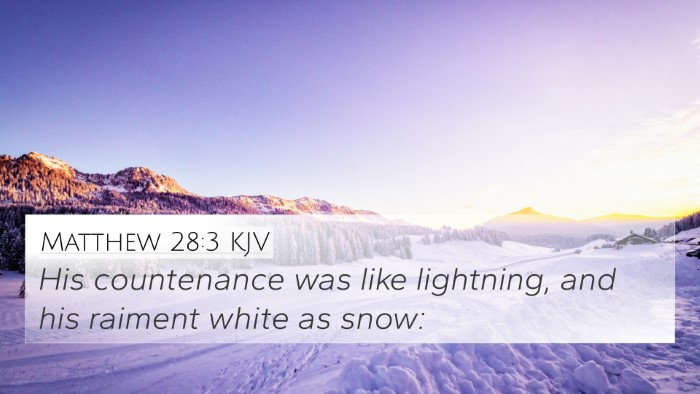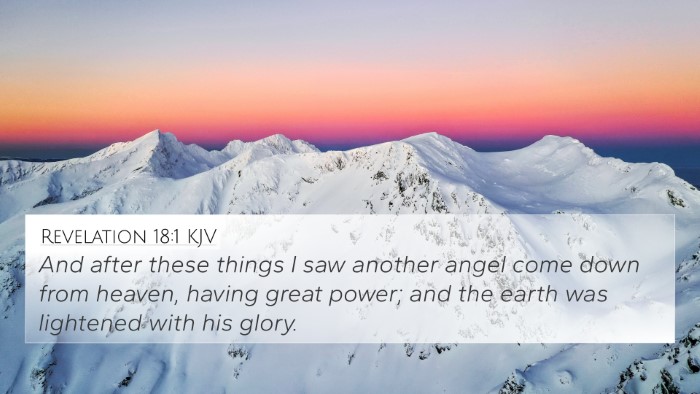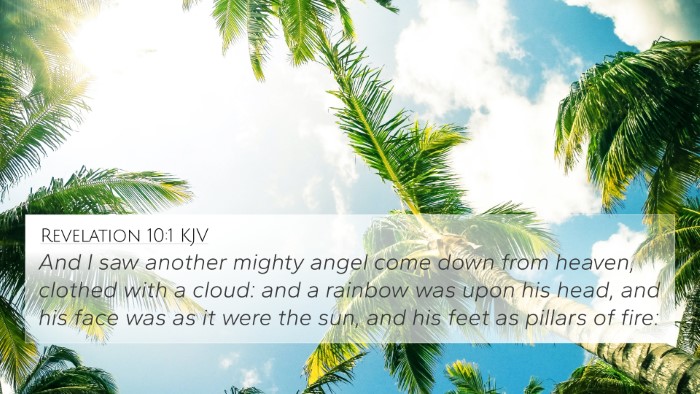Understanding Ezekiel 1:13
Ezekiel 1:13 describes a vision that the prophet Ezekiel had, wherein he perceives something akin to fiery coals. This verse is pivotal in the context of Ezekiel's commission and serves as a foundation for understanding God's glory and presence. The verse reads:
"As for the likeness of the living creatures, their appearance was like burning coals of fire, and like the appearance of lamps. It went up and down among the living creatures; and the fire was bright, and out of the fire went forth lightning." (Ezekiel 1:13, KJV)
Verse Meaning and Interpretation
The imagery presented in Ezekiel 1:13 connects deeply with themes of divine presence and holiness. The living creatures symbolize the majesty of God and His active presence among His people. Matthew Henry offers insight into the 'burning coals' as indicative of God's purifying and consuming nature, reflecting His holiness.
Albert Barnes emphasizes that the 'fire' signifies the judgments of God and His power, highlighting the intensity with which divine will operates. Adam Clarke adds that the characteristics of the creatures, described through the metaphor of fire and brightness, suggest their powerful and swift ministry—always ready to carry out God's commands.
Connections Between Bible Verses
This verse has numerous inter-Biblical links that enrich its understanding:
- Isaiah 6:6-7: In Isaiah's vision, a seraphim touches his lips with a live coal, symbolizing purification, akin to Ezekiel's imagery of fire.
- Revelation 4:5: The imagery of light and fire surrounding the throne of God parallels the brightness described in Ezekiel’s vision.
- Exodus 3:2: The burning bush reflects God's presence through fire, similarly showcasing His holiness and calling.
- Hebrews 12:29: “For our God is a consuming fire” resonates with Ezekiel's representation of divine power and judgment.
- 2 Chronicles 7:1: The fire of the Lord consuming the offerings aligns with the concept of God's fiery presence among His people.
- Psalm 104:4: The connection is made with God sending forth His angels as 'flames of fire', linking heavenly beings with divine intensity.
- Daniel 7:9-10: The throne of God and the fiery atmosphere echo the vision in Ezekiel, further establishing the theme of divine authority and purity.
Thematic Bible Verse Connections
Understanding Ezekiel 1:13 through thematic connections with other scriptures enriches our comprehension of God's majesty:
- The Majesty of God: The portrayal of God's glory in Ezekiel's vision is complemented by references in Psalm 29:4-9 where the voice of the Lord is depicted with awe and might.
- Purification: The coal's purifying purpose in Isaiah’s vision links to the purification theme in Zechariah 13:9, indicating a refined remnant.
- Heavenly Beings: The creatures seen by Ezekiel parallel the cherubim in Genesis 3:24 guarding the way to the Tree of Life, reflecting heavenly authority.
- God’s Presence: The connection can be drawn to Matthew 28:20, where Christ promises His presence, akin to the commitment depicted in Ezekiel's vision.
Cross-Referencing Biblical Texts
Thematic Bible verse connections through cross-referencing provide a nuanced understanding of Ezekiel 1:13:
To effectively study this verse alongside its related scripture, one may harness tools like a bible concordance or a bible cross-reference guide for deeper insights into the themes present.
By using a bible cross-reference system, readers can identify connections between Old and New Testament scriptures that reflect similar themes of divine presence, holiness, and ministry.
Tools for Comparative Bible Verse Analysis
The effective study of Ezekiel 1:13 encompasses:
- Utilizing bible reference resources for locating interrelated themes and ideas.
- Employing cross-referencing methods to connect passages and enhance understanding.
- Asking questions such as "What verses relate to Ezekiel 1:13?" and using various commentary insights for comprehensive analyses.
Conclusion
Ezekiel 1:13 serves as a profound verse that establishes God's radiant glory and the active role of heavenly beings in executing divine will. Engaging with this verse through cross-referencing enriches both personal study and communal teachings.
Each cross-referenced verse offers layers of meaning that support a deeper understanding of God’s character, presence, and holiness. As we explore these connections, we can better appreciate the intricate web of scripture that points us to the divine.
